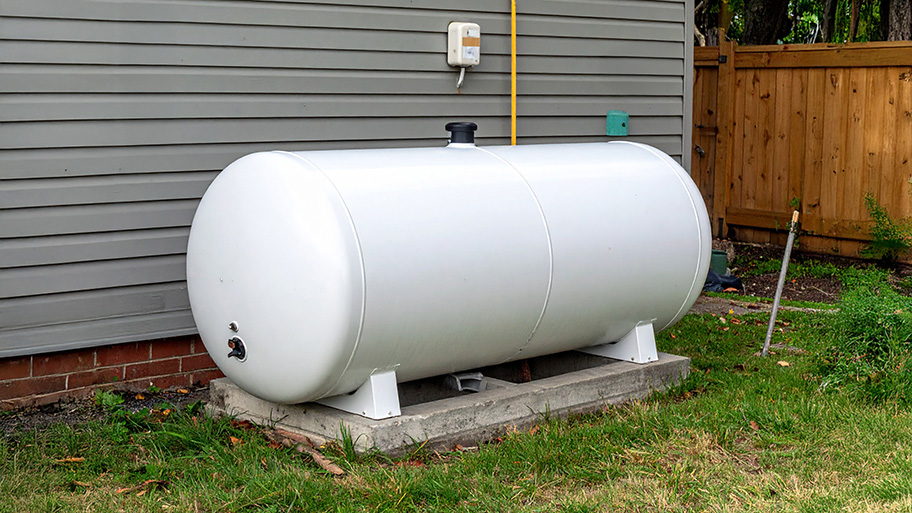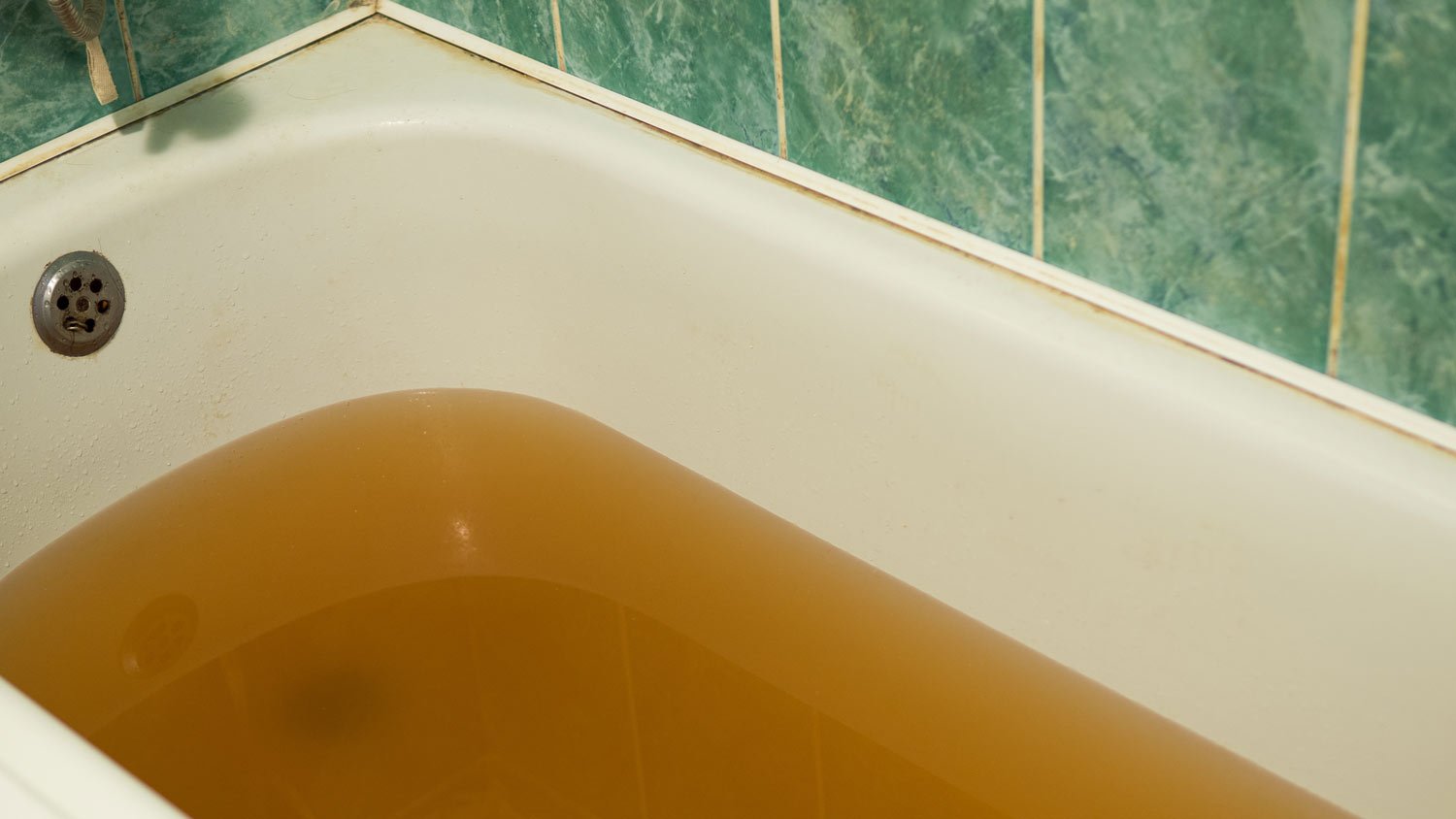
The average propane tank costs between $600 and $2,500, depending on the size, location, and more. Our expert guide explores all the factors.
Our tips will help you clear up the problem


Rusty fixtures or pipes can cause yellow bath water.
Older water heaters can leak mineral deposits into bath water, which can discolor it.
Water main breaks introduce sediment into your system that can make your water look yellow.
Solutions range from flushing your pipes to purchasing new plumbing components.
Imagine looking forward to soaking in a nice, hot bath after a long day, only to find your tub filled with yellow, cloudy water. So, why is your bath water yellow, and is it safe? Yellow bath water is not typical and usually indicates a problem with your pipes or fixtures. The good news is that the majority of these problems have straightforward fixes. Let's discuss what may be causing your yellow bath water and how you can resolve the issue.
Rust is one of the most common causes of yellow water in the tub. Metal pipes and plumbing fixtures can corrode over time, releasing rust flakes into your water. If your home has older galvanized steel pipes, this is very likely the cause of your yellow bath water.
To check if rust is the culprit, turn on cold water from various faucets. If water from multiple taps has a yellow color, it is likely due to corroded pipes. First, try running cold water for 10 to 15 minutes to flush out any loose rust. If staining persists or worsens, a plumber near you can inspect your pipes and recommend replacement if necessary.
Water heaters develop mineral and sediment buildup over time. Sediment that accumulates at the tank bottom also stains the water, mainly when hot water is utilized.
If your bath water is yellow only when it's hot, your water heater is the likely cause. Start by flushing the tank to remove sediment. This typically involves draining the tank using the drain valve. If flushing does not correct the issue, or the heater is past 10 to 12 years old, replacement will likely be the best long-term solution.
Construction on a municipal water main or a break in a water main can lead to short-term release of sediment and minerals into the public water system. This might cause brown or yellow water to enter buildings.
In some cases, a sudden flush of chlorine or other treatment chemicals may also cause colored water. Too much chlorine in your water supply can make your water appear cloudy and yellow or brown.
Check with your local water utility company to see if work has been completed in your area. If so, run cold water through your plumbing system from the lowest faucet (often an outside hose bib or basement faucet) for 10 to 15 minutes. If the problem persists for a day or two, have a professional plumber do an inspection.
If your residence has a point-of-use filter or whole-house water filtration system, using dirty or expired filters may result in discoloration of the water.
Check your water filters and replace them if they are beyond their useful life. Once new filters are installed, flush the system by running water for several minutes to ensure proper operation. Routine filter maintenance prevents sediment buildup, which can cause yellow bath water.

Be on the lookout for these typical signs of yellow bath water:
Yellow, tea-like, or brown discoloration in bath water
Cloudy appearance or particulate matter in the water
Metallic smell or taste in water
Deposits of staining on tub surfaces after draining bath water
You can try flushing your pipes or replacing filters yourself, but if yellow water persists—or if it’s accompanied by low water pressure, odors, or visible sediment—it’s best to call in a pro. If you’re unsure what’s causing the issue, review these common plumbing questions or contact a licensed plumber to assess your pipes, water heater, and fixtures.
If you need a professional, it is helpful to be aware of how much a plumber will charge you in advance of arranging services. And before you hire, familiarize yourself with common screening questions to ask a plumber so that you feel confident about your choice.
Drain your water heater every year to decrease sediment buildup
Replace water filters on time
Schedule periodic plumbing inspections to detect corrosion before it does harm
Be aware of water main construction in your area and flush pipes afterward
Address pipe replacement proactively, especially in older homes with galvanized pipes
I recently hired this company for brick pointing at my business and I’m quite happy with the results. The quality of work was excellent The team was very punctual and kept the workspace tidy.
this guy was the best, he got the job done within the hour of calling him, highly recommended, best prices, high quality service, funny.
Additions & Remodeling built us a gorgeous new deck that completely transformed our backyard. High-quality materials, skilled craftsmanship, and excellent communication throughout the project. Highly recommend their services!
If you need a reliable roofing contractor, look no further than LMC Home Remodeling. They are honest, hardworking, and do fantastic work.
From the initial consultation to the final walkthrough, CSB Construction Inc. provided an outstanding experience. They worked efficiently, kept the worksite clean, and delivered exactly what we envisioned. I appreciate their honesty, transparency, and commitment to excellence. Highly recommended!
I have used Eco Cleaning NYC twice for both couch and carpet cleaning, and they do an incredible job. They’re quick to book if you're in a jam and the price is very reasonable. Alexander was the tech for my most recent couch cleaning; he communicated promptly, arrived on time, was extremely...
The owner of Cleaning Maid Elegant, Suriya was so friendly, attentive, and very professional. Her cleaning team is very efficient and did a fantastic job cleaning my apartment! I canâ t wait to book another service with Suriya and her team! Thank you guys so much again.
Ethan is great to work with and does a great job!
Best service amazing job!! Very happy with our new driveway. Would highly recommend. Thanks
Goldman Home Improvement team completed our kitchen remodeling project recently. The project included plumbing, electric, storage, tiling, fixtures, sink and countertop installation. They did a fantastic job. We would recommend them for any work. They remodeled our kitchen looks beautiful....
From average costs to expert advice, get all the answers you need to get your job done.

The average propane tank costs between $600 and $2,500, depending on the size, location, and more. Our expert guide explores all the factors.

The average cost to replace a bathroom faucet typically ranges from $170 to $360. Faucet installation costs often vary based on the selected fixture hardware.

A burst pipe is a homeowner’s worst nightmare—but you can get ahead of the potential expense. This guide will help you budget for burst pipe repair costs.

We’ll show you how to keep pipes from freezing in the winter and how to thaw yours before they burst.

Need to create a residential plumbing design layout but don’t know where to start? Learn essential plumbing components to create the perfect layout for your home.

Installing a new kitchen sink involves removing the old sink and putting in the new one. Follow these steps to learn how to install a kitchen sink like a pro.